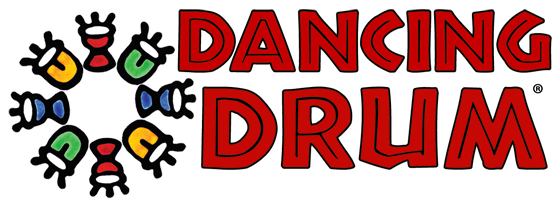- Continue Shopping
- Your Cart is Empty
We won an IPPY!!!
Dancing Drum Publishing is proud to announce that we were awarded an IPPY for our children's book, "Drumming Numbers with Boom Ba Bee"!!!
View full article →Check out our NEW BOOK for early childhood learners! "Drumming Numbers with Boom Ba Bee"
In this counting book for early childhood learners, we learn to count from ONE to TEN as Boom Ba Bee explores the world, meets friends, and finds a new rhythm at each stop.
Tap into the rhythm-language connection and drum along as we "say and play" our number rhythms with Boom Ba Bee!
View full article →Great NEWS! cARTwheels + Dancing Drum
Great news! Dancing Drum has been selected as a Teaching Artist for cARTwheels, North Carolina Arts Council’s Arts in Education Grant Program!
This means that you can access funding through the NC Arts Council to bring Dancing Drum your school. There is a process for applying for funding. You can learn more at this link:
https://www.ncarts.org/grants-resources/grants/grants-organizations/cartwheels-program-grants
We are thrilled to be a part of North Carolina’s rich arts community and look forward to reaching more students across the state with our new partners at cARTwheels!
Summer 2022 Teacher Training Intensive Was a Hit!
On August 15th, Dancing Drum hosted 40 music teachers from across the state at our Summer Teacher Training Intensive in Asheville, North Carolina. It was a fun, music-packed day, and we shared a wide range of activities and resources to enrich PreK-8 music programs through hands-on drumming. Check out a video of the day below!
If you’re interested in bringing a similar Professional Development program to your school district, just let us know!
New Elementary Music PD Added: That Sounds Great! Elementary Drumming in 3/4 and 6/8
Bring the magic of drumming in 3/4 and 6/8 time signatures to your music classroom! In this highly interactive session, attendees will learn and play beginning to advanced drum rhythms designed for success and fun! Expand your student's drumming skills as they explore the fascinating world of 3/4 and 6/8! View full article →Online Learning with Dancing Drum: It’s exciting! It’s fun! It’s a new adventure for everyone!
Here at Dancing Drum, we’re making the best of things by using this time to develop new online learning opportunities for you and your students. We’re actually really excited about this and can’t wait to share with you! View full article →New Article in NC Music Educator Journal: We Got the Beat!
We are pleased to announce the publication of a new article in the Summer 2019 edition of North Carolina Music Educator, titled "We Got the Beat: Bring Drumming into your Curriculum", by Dancing Drum's Musical Director, Mr. Steve Campbell. This article delves into the history and development of Dancing Drum, and philosophy behind our musical mission. Enjoy! View full article →Upcoming Professional Development Conferences in IL and NC
We look forward to bringing Dancing Drum to state music education conferences in North Carolina and Illinois this school year! Here are a few more details about the hands-on, interactive sessions that will be led by our Musical Director, Mr. Steve... View full article →How Drumming Can Improve School Culture & Educational Outcomes
Peeking through the door of the music classroom, drumming may appear to be a fun diversion, like recess or free play, however, while we're drumming, we're working across multiple levels of intelligence. The "fun" layer is the part that engages students and gets them to embrace the experience with enthusiasm. The deeper layers are about creating connections, not only to academic areas, but to each other and to our community of peers. Drumming can help fulfill a basic human need: community and connection. That's why we say that drumming creates happy students, and happy students create...
View full article →




